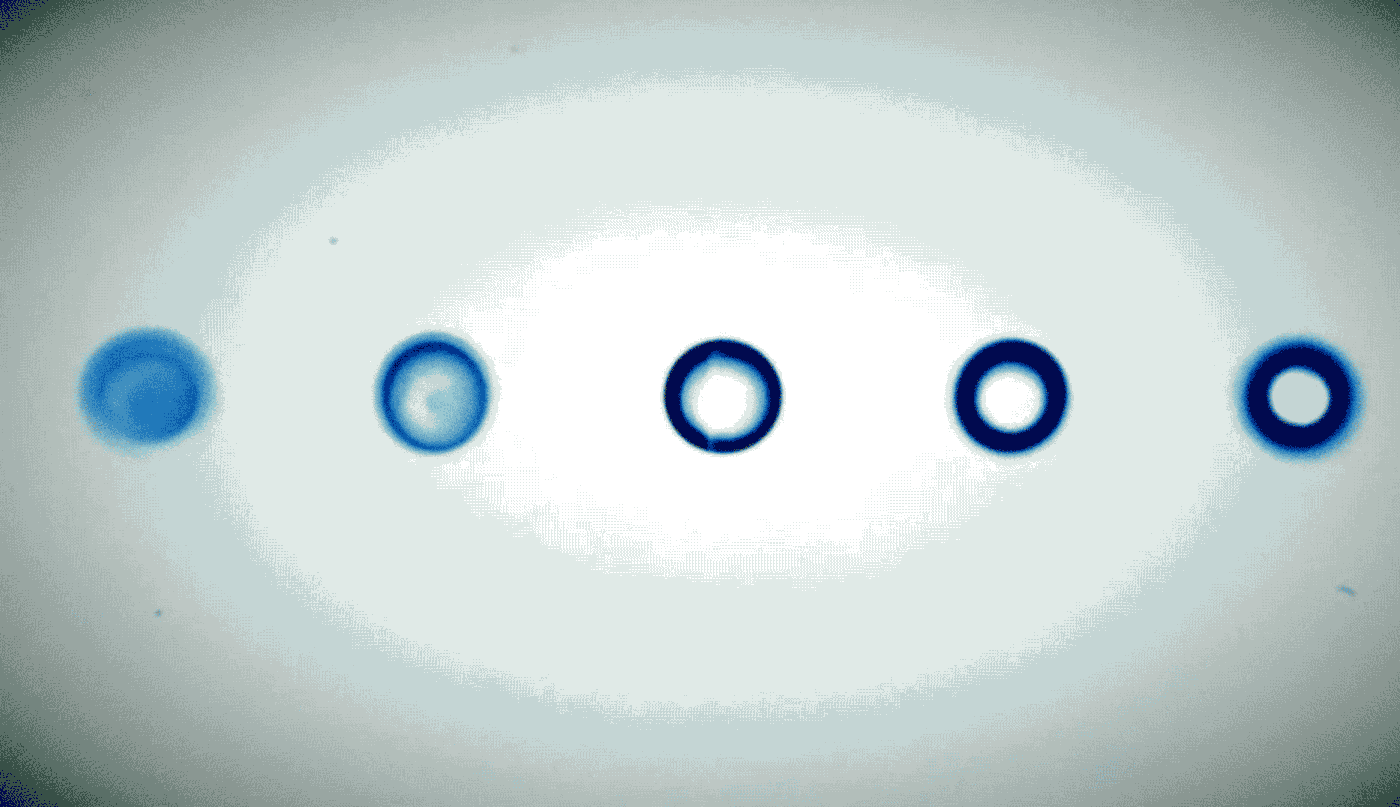Scientists from the SLAC National Accelerator Laboratory published a video showing for the first time in science how the world’s most powerful X-ray laser vaporizes water droplets.
Studying the resulting explosions will allow researchers to know how matter reacts when exposed to extreme conditions that could be potentially dangerous for living organisms.
Two types of tests were made. One had the liquid be exposed to the laser in the form of droplets while the other consisted in a constant stream of liquid. The frames ranged from five billionths to ten-thousandths of a second after each X-ray pulse was emitted.

Blasting water with X-ray beams
One can see the position where the X-ray laser is going to be emitted thanks to a white line in the middle of the screen. As the laser emits its pulses, it is possible to see how the jet stream or the drop of liquid alters its shape depending on how the laser is applied.
Capturing the images seen in the video was a true feat, as X-ray lasers are incredibly fast pulses of light emitted at high wavelengths. High-speed cameras had to be employed in order to have a decent view of what happens when liquid particles were blasted with X-ray beams.
When an X-ray pulse reaches a drop, it bursts into smaller particles, affecting the surrounding droplets. It looks like a balloon exploding if the balloon was made out of infinitely-divisible rubber. On the shots where the pulse is sent towards a stream, one can see how the stream splits apart and how its particles move away from where the pulse is being emitted to.
The phenomenon can be compared to a compressed air stream, but since it is a beam of light, the results are much more exciting because there is not a particle of matter causing the destruction of the droplet or the stream, but rather a set of light waves emitted through X-rays. The droplets and streams were in a vacuum chamber, meaning that there was no air surrounding the liquid at the time of the X-ray pulse.
What happens is that the X-ray pulse instantly heats the jet stream of water, which causes sort of a cone of gas to occur, splitting the stream into two umbrella-shaped streams. A film flow of water surrounds the cones as they are filled with expanding vapor in the form of gas flow; the gas pressure moves towards the remaining liquid columns at both sides of the cone, causing them to spread outwards, thus forming the aforementioned umbrellas.
Each frame in the video corresponds to one pulse of X-ray beams, where hundreds of snapshots allowed the team to render a short and fascinating movie.
“We used an ultrafast optical laser like a strobe light to illuminate the explosion, and made images with a high-resolution microscope that is suitable for use in the vacuum chamber where the X-rays hit the samples,” commented Sébastien Boutet, co-author of the study.
Researchers then analyzed the experiments through mathematical models and described how liquid structures were affected by pulses of high-energy X-ray beams, hoping to benefit future experiments regarding changes in matter in microscopical time frames.
Source: Nature
